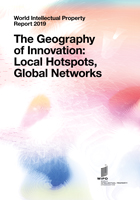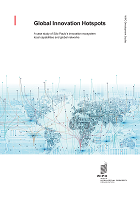Innovation Hotspots: São Paulo is Brazil’s Innovation Powerhouse
For many, São Paulo comes first when tapping into the Latin American innovation ecosystem. As a national and regional innovation powerhouse, São Paulo is home to vibrant entrepreneurial activities advancing the frontiers of science and technology. Learn about what makes São Paulo thrive in innovation!

São Paulo is the largest city in Brazil. It is home to twenty-three millions of inhabitants and makes up about a fifth of Brazil’s gross domestic product. Thanks to direct cash transfers, minimum-wage policies and other social policies, São Paulo has had an increasingly affluent middle class, with many inhabitants using smartphones and being early adopters of modern technologies. Socioeconomic factors like these have partly led São Paulo to rank high in worldwide start-up rankings and resemble characteristics of large innovation hotspots, such as those in Geneva, Delhi and Washington, D.C. São Paulo accounts for more than a half of Brazil’s start-up investments and unicorns and concentrates most venture capital firms and large corporations.
But what has made São Paulo’s innovation hotspot successful? This story investigates four elements:
1. Leading in patenting
São Paulo has maintained a leading position in patenting at the national and international levels. When looking at patent applications to the international patent family (IPF) over the 2001 – 2015 period, São Paulo has stood up as the most patenting cluster of Brazil and has recorded higher applications than other Latin American hotspots, such as those in Mexico City, Buenos Aires, and Santiago. São Paulo has also outperformed other Brazilian hotspots and mesoregions in submissions of patent applications to the National Institute of Industrial Property (INPI). Overall, São Paulo has accounted for over a fifth of patent applications to both the IPF and INPI during the 15-year period of analysis.
2. Technological diversification
São Paulo's patenting activity is spread out across various technological fields, unlike other, more biased, ecosystems. The advantage of this technological diversity is that São Paulo's innovation hotspot can benefit from combining knowledge and expertise from different fields. This interdisciplinary approach has the potential to lead to the creation of more complex and valuable technologies. The mix of various knowledge and skills in São Paulo can result in innovative breakthroughs and significant technological advancements.
3. Harnessing innovation networks
São Paulo plays two key roles in harnessing new technological knowledge across innovation systems and networks in Brazil. One role is acting as a broker or gatekeeper in regional innovations by having a central place in co-patenting networks. Networks of multinational companies, for example, have a high concentration in São Paulo’s innovation hotspots, which enables local actors to spur spatial knowledge spillovers from São Paulo to its neighboring regions. The second role is bridging connection paths between networks of co-inventors. For instance, São Paulo fosters dynamic linkages between domestic firms and multinational companies to collaborate in patenting activities.
4. Driving local initiatives
‘Desenvolve-SP’ and the São Paulo Technological Park System (SPTec) are two initiatives that support industrial and technological development in São Paulo.
- ‘Desenvolve-SP’ is a financial institution that supports economic development policies through three financing schemes. The first scheme is for government programs that partner with São Paulo´s public sector institutions to foster social and regional development. The second scheme is for projects that involve municipalities to support investments in city infrastructures. The third scheme is for supporting small businesses.
- SPTec is a program that offers research and development opportunities to companies by fostering business synergies and by attracting technological investments. This initiative has led São Paulo to count with thirteen accredited technological parks.
Related stories

The Singaporean Recipe for Development
Singapore’s policymakers have played a significant role in helping the state transition into a high-income economy in less than forty years. Learn about which policies proved to be the most effective!

The Importance of Making Connections
Just as people benefit from making connections in social and working environments, hotspots cross international borders to seek partners for innovation. Making these connections and choosing the right partners is increasingly important.

How Policy may Redirect Innovation
Government policies can affect the rate and, to some extent, the direction of innovative activities. Some of these policies, such as R&D tax incentives, protection of IP rights, encourage innovation.

